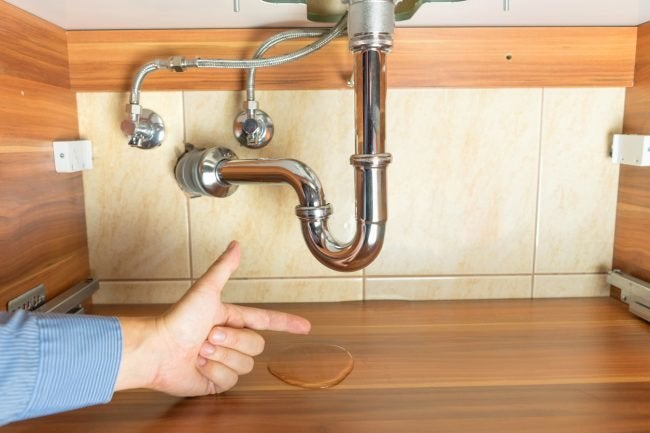This great article in the next paragraphs involving Hacks to detect leaks is pretty much insightful. Don't skip it.

Early detection of leaking water lines can reduce a prospective catastrophe. Aside from saving you cash, it will decrease the stress as well as stress. The minute you locate a leakage, calling your plumber for repair work is the most effective service. However, some small water leaks may not be visible. If you can not detect it with your naked eyes, right here are some hacks that assist.
1. Take A Look At the Water Meter
Every home has a water meter. Examining it is a surefire manner in which assists you discover leaks. For starters, switch off all the water sources. Make sure no one will flush, make use of the faucet, shower, run the washing machine or dish washer. From there, most likely to the meter and watch if it will transform. Since no person is utilizing it, there should be no activities. If it relocates, that indicates a fast-moving leakage. Furthermore, if you discover no changes, wait a hr or two and examine back once again. This means you may have a sluggish leakage that can even be below ground.
2. Inspect Water Usage
If you detect abrupt adjustments, regardless of your consumption being the exact same, it means that you have leaks in your plumbing system. An unexpected spike in your costs shows a fast-moving leak.
On the other hand, a constant increase every month, despite having the very same practices, reveals you have a slow leak that's likewise gradually intensifying. Call a plumber to thoroughly examine your residential or commercial property, particularly if you feel a warm location on your flooring with piping underneath.
3. Do a Food Coloring Examination
When it comes to water intake, 30% comes from toilets. If the shade in some way infiltrates your dish throughout that time without flushing, there's a leak in between the storage tank as well as dish.
4. Asses Outside Lines
Do not neglect to inspect your exterior water lines too. Must water leak out of the connection, you have a loosened rubber gasket. One tiny leakage can squander bunches of water and surge your water bill.
5. Analyze the scenario and also check
Home owners ought to make it a routine to check under the sink counters and also also inside cabinets for any type of bad odor or mold and mildew growth. These two red flags show a leak so punctual attention is needed. Doing regular evaluations, even bi-annually, can save you from a major issue.
Inspect for stainings as well as weakening as a lot of devices and pipes have a life expectancy. If you suspect dripping water lines in your plumbing system, do not wait for it to intensify.
Early discovery of dripping water lines can reduce a possible calamity. Some small water leakages might not be noticeable. Inspecting it is a proven way that helps you uncover leakages. One little leakage can throw away tons of water and also increase your water costs.
If you think dripping water lines in your plumbing system, don't wait for it to intensify.
How to Know If Your Home Has a Hidden Leak
Water Meter Reveals Inexplicable Water Usage
If you’d like to test whether or not there’s a leak somewhere in your home, you can do this using your water meter. Here is how to conduct the test:
Don’t use any water in your home for at least 30 minutes; this also means not turning on faucets or water-using appliances.
Go outside, and check your water meter for activity.
If your water meter shows that there was activity, even though no one was using any water, this proves that there is a leak in your home.Visible Mold or Mildew Growth
Leaks behind walls create moist, dark environments that allow mold and mildew to grow and thrive. Eventually, you might see mold growth forming on the wall closest to a hidden leak.
If mold is growing in an area that receives a high amount of moisture, such as a bathroom, it may simply be an indication that better ventilation is needed. However, if you see mold growth on a wall or the ceiling in an area where you would not expect, you probably have a hidden leak.
Musty, Mildew Odor
Sometimes you might not be able to see the mold or mildew that is growing as a result of a leak. However, the smell can give the problem away just as easily. If you catch a whiff of something musty, there’s a good chance that old water is collecting somewhere in your home that you can’t see.
Stained/Warped Walls, Ceilings, or Floors
When your home soaks up water, a variety of red flags can become visible, including ceiling stains, bubbling drywall, warped walls, and sagging floors. While these issues can be caused by excess humidity, they can also be signs that a pipe or plumbing connection has started leaking behind your walls.
Inexplicably High Water Bill
After a while, you get a general sense for what your water bill should be. If you own a pool or sprinkler system, your bill will tend to be higher during summer. However, if you receive a water bill that seems especially high, and you can’t figure out what caused it, then you may have a hidden leak somewhere that’s increasing your bill.
https://www.plumbingjoint.com/blog/2019/july/how-to-know-if-your-home-has-a-hidden-leak/

We were made aware of that article on Leaking water lines through a good friend on our other web property. Do you know about another individual who is in to the topic? Please feel free to promote it. I am grateful for your time. Come back soon.